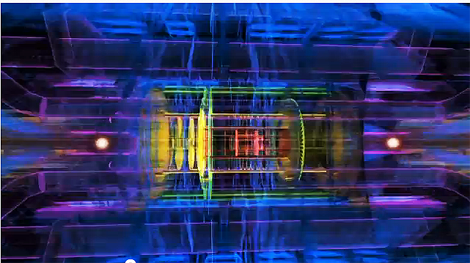 When Man first stepped on the Moon, some of us were able to watch this event live on television. It was possible not only to see, but also to hear the phrase that Neil Armstrong uttered to history: “One small step for a Man, one giant step for Humanity”.
When Man first stepped on the Moon, some of us were able to watch this event live on television. It was possible not only to see, but also to hear the phrase that Neil Armstrong uttered to history: “One small step for a Man, one giant step for Humanity”.
In fact, tele and radio broadcasting transformed each one's relationship with proximity, and the distant became our neighbor.
Times change, as do technologies that spread communication with (or without) information. Nowadays, news comes a lot through the internet. Or, otherwise, it arrives earlier through the "cybernautical river" that flows into multimedia in a panoply of various receivers (landline or portable computer, mobile phone, "tablet", among others), forming new media deltas with writing, sound, video , in a XNUMXst century informative composite that amplifies and enhances sensory reality.
Social networks, broadcast and streamlined by pocket accessibility, anticipate countless times the news that no longer spreads with the wind: the secret is read and seen and the whisper falls into disuse, obsolete.
Transmitter and receiver no longer look at each other, eye to eye. A whole technology is interposed, the development of which owes much to the study of the matter of which we, and the cosmos in which we are immersed, are made. It may seem strange and surely distant, but the construction of this notebook where I write this chronicle would not be possible without the centenary understanding that the atom is composed of electrons, neutrons and protons, without the chemistry and quantum physics that, among many others things, tells us how the energy transitions between the elementary subatomic particles that define atoms occur.
 We need to know the intimate nature of matter, of the atoms we breathe, to develop the technology that allows us to perform a “CAT”, or take an x-ray x-ray and the radiologist “see” the result seconds later!
We need to know the intimate nature of matter, of the atoms we breathe, to develop the technology that allows us to perform a “CAT”, or take an x-ray x-ray and the radiologist “see” the result seconds later!
We need to know what the world is made of, not only for the delight of human intelligence, but a lot to solve problems that affect our life, its quality, and also our survival.
In fact, to eventually resolve the damage we have done to other living beings that live with us this "pale bluish point" (the Earth seen from space) in the infinity of the cosmos, to mitigate our belligerent ignorance, to reverse the "fatalizing" social inequality that it sows humanity of death by thirst, hunger and disease.
It is true and well known that this is not an isolated task of science, but of all human knowledge. However, scientific knowledge, due to the permanent confrontation of different ideas, the methodological characteristic of its independent interlaboratory validation, its continuous and cumulative construction, the humility forged by its inherent “falsicability”, is the driving force for a better citizenship in democracy.
If the knowledge that atoms are also composed of quarks, mesons, bosons, among other particles, allows the development of technology to treat diseases such as some cancers, or to make medicines adjusted to the specificities and needs of each human being, then the news about the latest results obtained in experiments investigating the sub-atomic nature should be of interest to all, it should be news opening news, properly commented and explained. Even if it was only because these experiments were financed by public money.
And here's the wharf of news: on July 4th, at 8:00 am (Portuguese time) “it will take place at CERN” according to a source connected to the Instrumentation and Experimental Particle Physics Laboratory, “a scientific seminar in which the ATLAS and CMS experiments will present preliminary results” on the existence, or not, of the Higgs boson “based on data obtained this year” and “carried out by collaborations each with about 3500 researchers from 180 institutions in 40 countries”, including Portugal through that laboratory.
“The 4th of July seminars at CERN and the press conference that follows will be broadcast via webcast and can be followed on http://webcast.cern.ch. "
Confirming the existence of the Higgs boson can help us understand why fundamental particles, such as quarks or electrons, have mass.
The collision between two small protons could be another great expansion of knowledge for Humanity!
Follow Science Live!
Author Antonio Piedade
Science in the Regional Press


















Comments